Leverage means to use broker-provided capital to make trades in a bigger size. Trading with leverage may intensify buying or selling power, as traders can access massive trade amounts. Regardless of having a small initial capital, you can take more prominent positions for trades. Sometimes such trading is complex, especially for novices. Still, before starting, it is crucial to acknowledge it.
This article will emphasize leverage trading in the crypto market, which is also applicable in traditional markets significantly.
What is leverage?
Leverage incorporates the process of taking a particular amount of money as a loan for investment purposes. Usually, the money is taken from a broker. The trader may develop and control a significant amount of money without investing huge money. Trading with leverage comes with high leverage as a requirement of initial margin.
However, leverage helps traders to obtain a greater exposure by borrowing capital. It provides an excellent opportunity for managing larger trades but with limited capital investment. The leverage may also take massive gains and losses since it relies on the total position value.
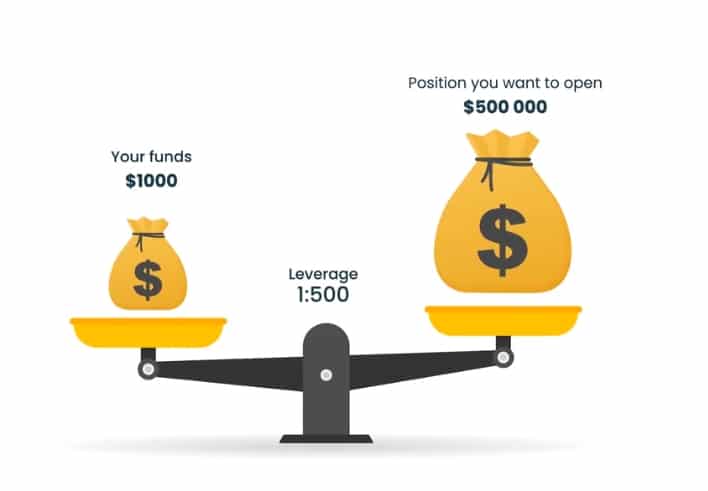
How to trade using leverage in crypto trading strategy?
A trading account with a deposit fund is a must-have beforehand borrowing the money. The starting deposit you’ll deposit will be as the collateral, which will depend on your utilized leverage and the total position value of your trading position.
For instance, to make an investment of $5,000 in Bitcoin and 10x leverage. The margin requirement is 1:10 of $5,000, implying that you must deposit $500 in your account.
Besides, in the case of utilizing a 20x leverage, your margin requirement will lower to $250 (1:20 of $1,000 = $250). It is also important to remember that increasing the leverage will also amplify the risks of losing all investments at once.
A short-term trading strategy
A market participant can use small stop losses to gain big profits. It is very profitable for traders because this method requires a meager amount to trade. Let’s say you have the leverage of 1:100 on the $1,000 account. So, you are now controlling $100,000 with just $1,000, and you can open ten lots per trade.
We will use the structure breakout trading method in this short-term leverage trading crypto strategy. Moreover, we will add the 20 EMA indicator to add more confluence to the trade.
Bullish trade scenario
First, you have to add the 20 EMA indicator to the chart. Then draw a structure of the market and wait for the structure to break upside.
- 20 EMA will add more confluence by residing below the price.
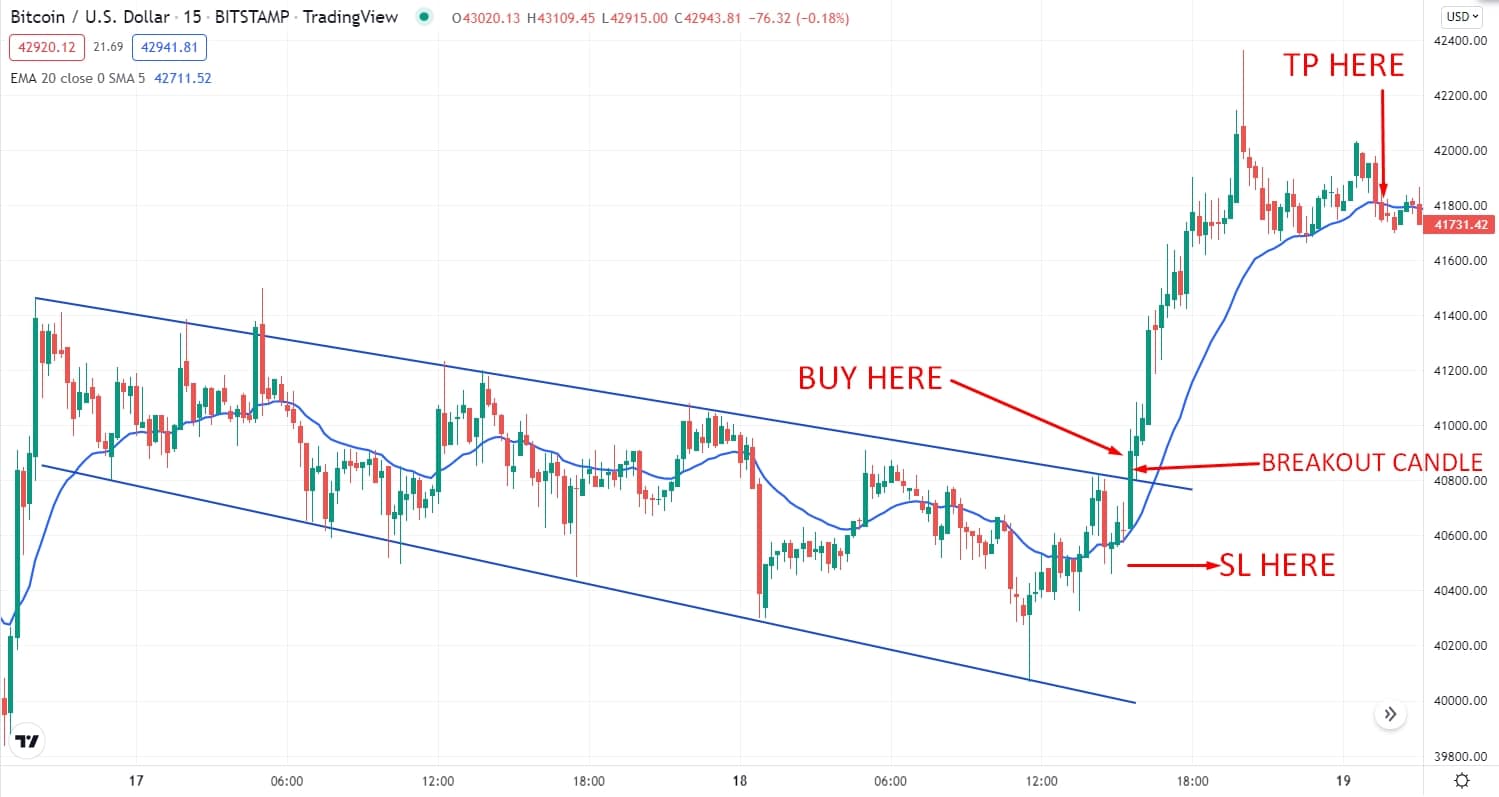
Entry
Open a buy trade when the price had an impulsive bullish candle close after a breakout.
Stop-loss
Put the stop loss order below the dynamic level of 20 EMA with at least 5-10 pips buffer. So, if you opened one lot position and your stop-loss is 15 pips below the entry, you are risking $150.
Take profit
Take the profit when the price closes below the 20 EMA with a bearish candle. Or else, you can target at least a 1:3 risk/reward ratio, which means if the trade hits the target, your profit will be $450.
Bearish trade scenario
First, you have to add the 20 EMA indicator to the chart. Then draw a market structure and wait for the structure to break the downside.
- 20 EMA will add more confluence by residing above the price.
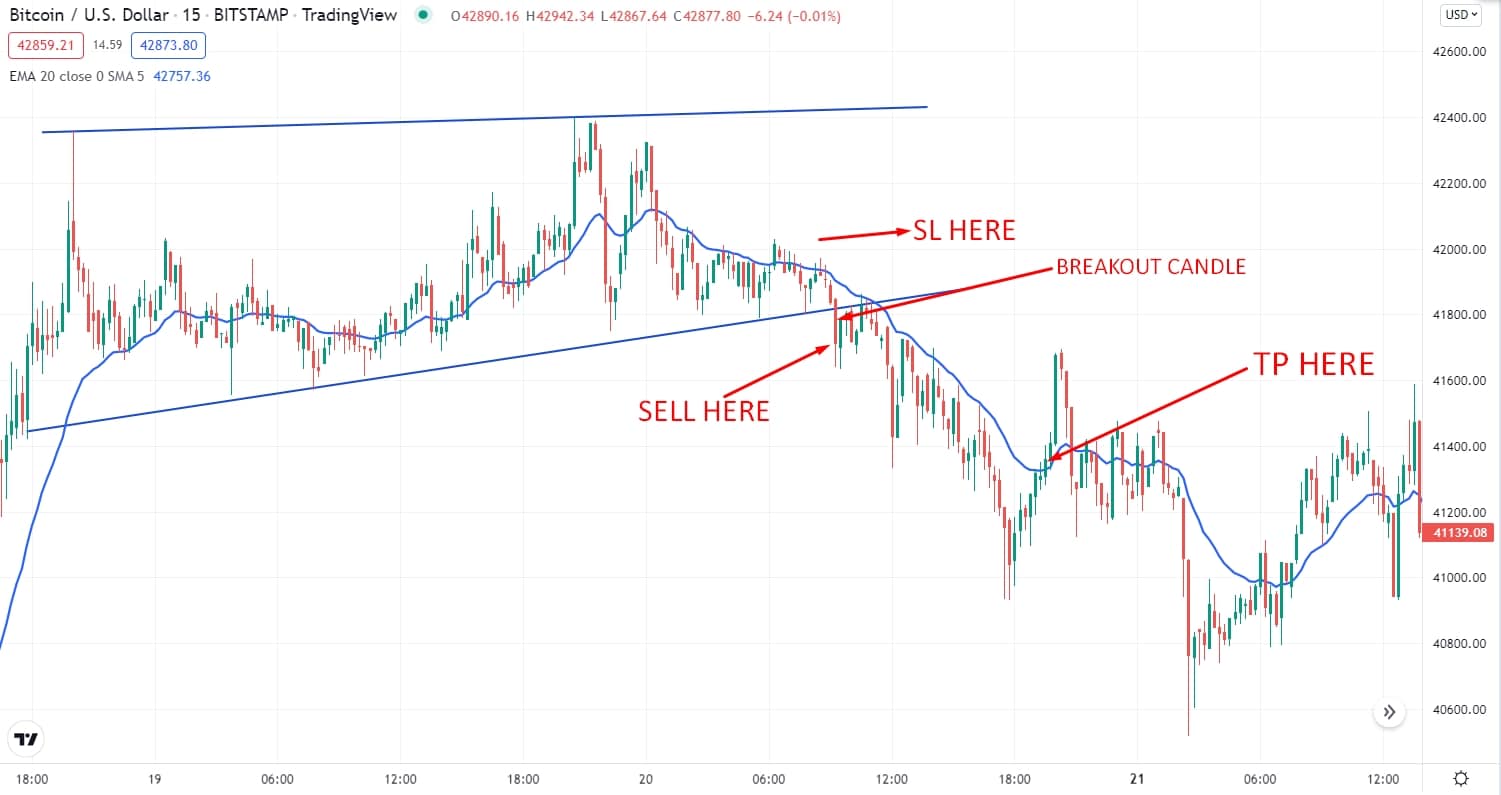
Entry
Open a sell trade when the price had an impulsive bearish candle close after a breakout.
Stop-loss
Put the stop loss order above the dynamic level of 20 EMA with at least 5-10 pips buffer. So, if you opened one lot position and your stop-loss is 15 pips above the entry, you are risking $150.
Take profit
Take the profit when the price closes above the 20 EMA with a bullish candle. Or else, you can target at least a 1:3 risk/reward ratio, which means if the trade hits the target, your profit will be $450.
A long-term trading strategy
However, you can use the same leverage method as we have mentioned in the short-term trading strategy. In this long-term leverage trading crypto strategy, we will use support and resistance levels to find trades. Moreover, we will add the Bollinger Bands indicator to add more confluence to the trade.
Bullish trade scenario
First, you have to add the Bollinger Bands indicator to the chart. Then look for the price to bounce from a support level and have a daily bullish candle close above the Bollinger Bands lower band.
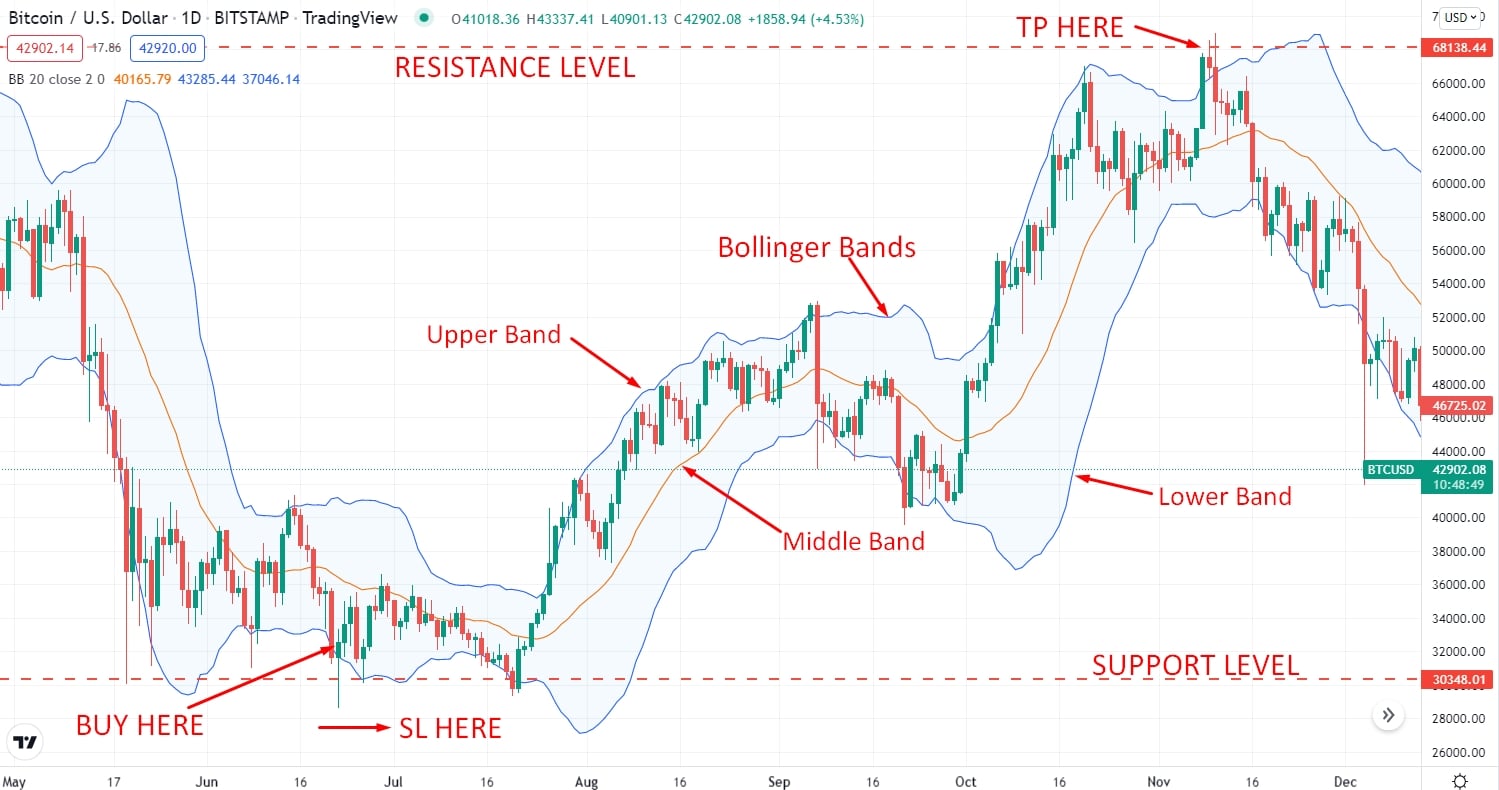
Entry
Open a buy trade when the price had an impulsive bullish candle close inside the Bollinger Bands lower band after bouncing from the support level.
Stop Loss
Your stop-loss order should be placed below the entry candle with at least a 10-15 pips buffer. So, if you opened one lot position and your stop-loss is 30 pips below the entry, you are risking $300.
Take profit
Set the take profit order on the upcoming resistance level. Otherwise, you can take the profit by calculating a 1:3 risk/reward ratio, which implies if the trade hits the target, your profit will be $900.
Bearish trade scenario
First, you have to add the Bollinger Bands indicator to the chart. Then look for the price to reject from the resistance level and have a daily bearish candle close below the Bollinger Bands upper band.
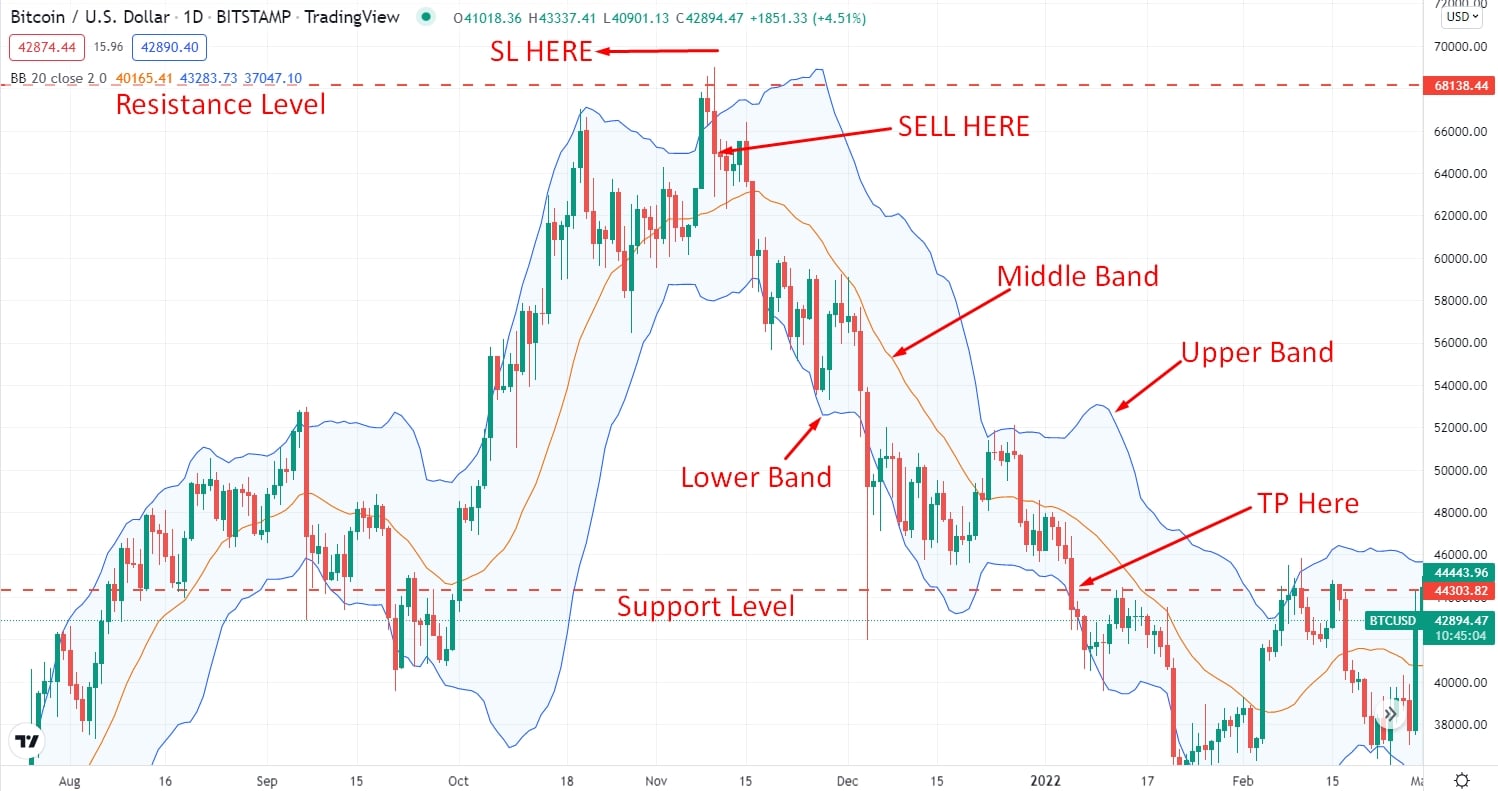
Entry
Open a sell trade when the price had an impulsive bearish candle close inside the Bollinger Bands upper band after rejecting from the resistance level.
Stop Loss
Your stop-loss order should be placed above the entry candle with at least a 10-15 pips buffer. So, if you opened one lot position and your stop-loss is 30 pips above the entry, you are risking $300.
Take profit
Set the take-profit order on the upcoming support level. Otherwise, you can take the profit by calculating a 1:3 risk/reward ratio, implying that if the trade hits the target, your profit will be $900.
Pros & cons
| Pros | Cons |
|
|
|
|
|
|
Final thoughts
Finally, leveraged trading may conceivably expand your profit gains. On the other hand, it has high associated risks, particularly in the crypto market since the crypto market is highly volatile. Therefore, always be cautious in the time of trading crypto utilizing leverage. If the market turns against your position, you may encounter significant losses.




